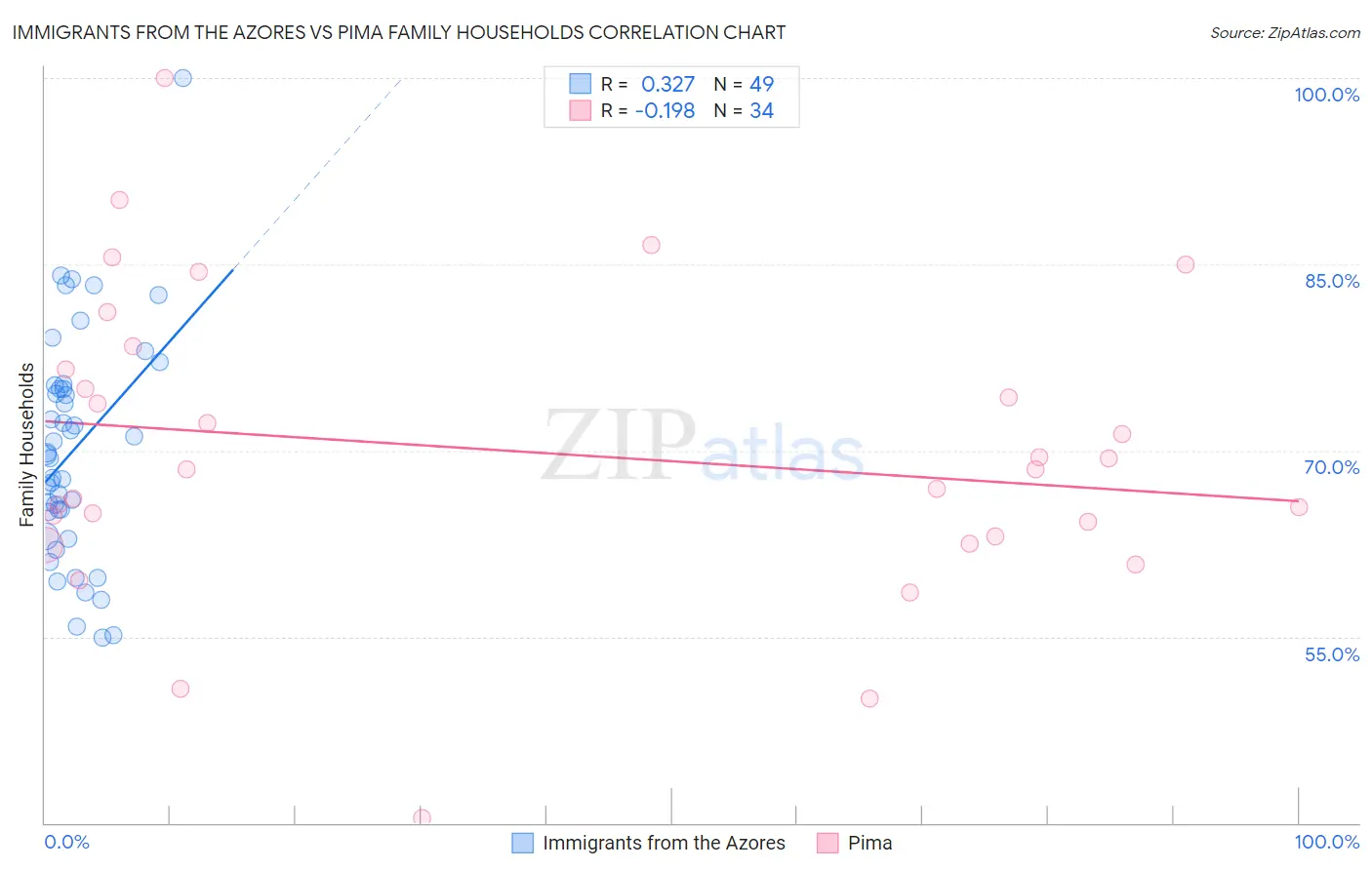Immigrants from the Azores vs Pima Family Households
COMPARE
Immigrants from the Azores
Pima
Family Households
Family Households Comparison
Immigrants from the Azores
Pima
65.6%
FAMILY HOUSEHOLDS
99.8/ 100
METRIC RATING
76th/ 347
METRIC RANK
65.9%
FAMILY HOUSEHOLDS
99.9/ 100
METRIC RATING
64th/ 347
METRIC RANK
Immigrants from the Azores vs Pima Family Households Correlation Chart
The statistical analysis conducted on geographies consisting of 46,257,310 people shows a mild positive correlation between the proportion of Immigrants from the Azores and percentage of family households in the United States with a correlation coefficient (R) of 0.327 and weighted average of 65.6%. Similarly, the statistical analysis conducted on geographies consisting of 61,539,566 people shows a poor negative correlation between the proportion of Pima and percentage of family households in the United States with a correlation coefficient (R) of -0.198 and weighted average of 65.9%, a difference of 0.46%.

Family Households Correlation Summary
| Measurement | Immigrants from the Azores | Pima |
| Minimum | 54.9% | 40.4% |
| Maximum | 100.0% | 100.0% |
| Range | 45.1% | 59.6% |
| Mean | 70.1% | 69.9% |
| Median | 69.6% | 68.5% |
| Interquartile 25% (IQ1) | 64.1% | 63.1% |
| Interquartile 75% (IQ3) | 75.1% | 76.5% |
| Interquartile Range (IQR) | 11.0% | 13.5% |
| Standard Deviation (Sample) | 9.1% | 12.1% |
| Standard Deviation (Population) | 9.0% | 11.9% |
Demographics Similar to Immigrants from the Azores and Pima by Family Households
In terms of family households, the demographic groups most similar to Immigrants from the Azores are Immigrants from South America (65.6%, a difference of 0.010%), Yaqui (65.6%, a difference of 0.010%), Immigrants from Costa Rica (65.6%, a difference of 0.040%), Puget Sound Salish (65.6%, a difference of 0.060%), and Houma (65.7%, a difference of 0.12%). Similarly, the demographic groups most similar to Pima are Costa Rican (65.9%, a difference of 0.010%), Fijian (65.9%, a difference of 0.050%), Filipino (65.9%, a difference of 0.050%), Immigrants from Indonesia (66.0%, a difference of 0.060%), and Japanese (65.9%, a difference of 0.070%).
| Demographics | Rating | Rank | Family Households |
| South Americans | 100.0 /100 | #60 | Exceptional 66.0% |
| Danes | 100.0 /100 | #61 | Exceptional 66.0% |
| Central Americans | 100.0 /100 | #62 | Exceptional 66.0% |
| Immigrants | Indonesia | 100.0 /100 | #63 | Exceptional 66.0% |
| Pima | 99.9 /100 | #64 | Exceptional 65.9% |
| Costa Ricans | 99.9 /100 | #65 | Exceptional 65.9% |
| Fijians | 99.9 /100 | #66 | Exceptional 65.9% |
| Filipinos | 99.9 /100 | #67 | Exceptional 65.9% |
| Japanese | 99.9 /100 | #68 | Exceptional 65.9% |
| Malaysians | 99.9 /100 | #69 | Exceptional 65.9% |
| Immigrants | Afghanistan | 99.9 /100 | #70 | Exceptional 65.9% |
| Bhutanese | 99.9 /100 | #71 | Exceptional 65.9% |
| Portuguese | 99.9 /100 | #72 | Exceptional 65.8% |
| Laotians | 99.9 /100 | #73 | Exceptional 65.8% |
| Burmese | 99.9 /100 | #74 | Exceptional 65.7% |
| Houma | 99.9 /100 | #75 | Exceptional 65.7% |
| Immigrants | Azores | 99.8 /100 | #76 | Exceptional 65.6% |
| Immigrants | South America | 99.8 /100 | #77 | Exceptional 65.6% |
| Yaqui | 99.8 /100 | #78 | Exceptional 65.6% |
| Immigrants | Costa Rica | 99.8 /100 | #79 | Exceptional 65.6% |
| Puget Sound Salish | 99.8 /100 | #80 | Exceptional 65.6% |